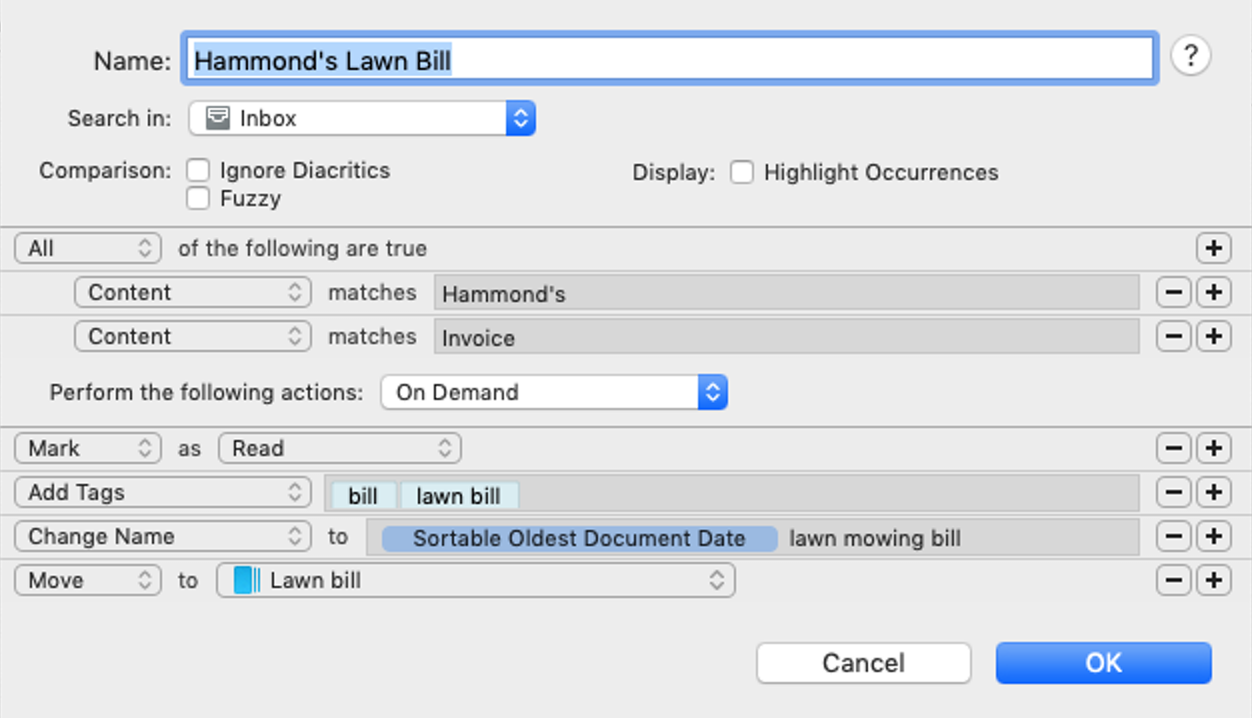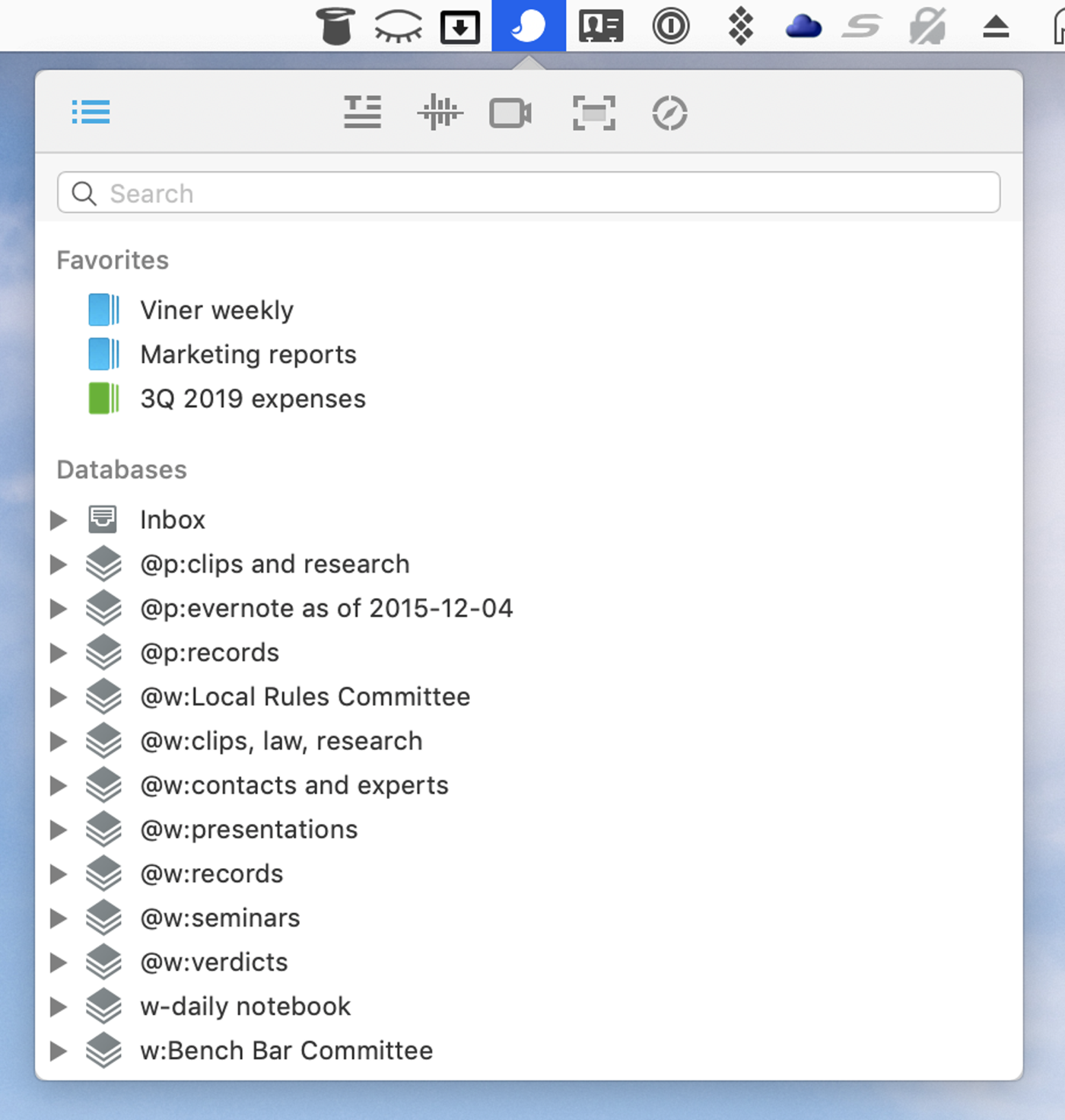Readers of this blog know how important DEVONthink is to my workflow. I use it as a central repository on my Mac for almost every piece of information in my professional and personal life, including as a place to store personal and business records, deposition data, jury verdict reports, legal research, trial notebooks, and more. I’ve been using DEVONthink 2 for over 7 years, during which time the program has seen frequent updates and improvements. Now, though, DEVONtechnologies has released an entirely new version of DEVONthink for the Mac.
DEVONthink 3 is too deep of an application for me to cover all its features, do it justice, and still live my life, but here are some bullet point highlights of my favorite additions and changes, after using the DEVONthink beta for the past few months. I’ll also cover my two gripes. Please note that these opinions were formed using the betas. I have tried to identify any changes in the final release that affect any of my points, but if I catch anything later I’ll be sure to update this post.
Improved User Interface
Some users complained that the interface of DEVONthink 2 was unattractive. I wasn’t one of them, finding it to be beautifully utilitarian. But if you were hoping for a more modern-looking interface, DEVONthink 3 might satisfy you. DEVONthink 3 is an insanely feature-rich application, so there’s no way it is ever going to be sparse and contain lots of white space, but it is prettier than DEVONthink 2.

The two most obvious changes concern the sidebar, and the inspector pane. The sidebar now has a dedicated area for all your inboxes, as well as a section for smart groups and smart rules (more on smart rules below).
Smart Rules!
If you use Hazel on your Mac, and ever wished DEVONthink offered a similar ability to auto file, auto tag, and more, your prayers have been answered. While not as full-featured as Hazel, DEVONthink’s smart rules come close enough that I’ve moved almost all of my auto-filing into the app.

DEVONthink 3’s smart rules allow you to automatically file, tag, and rename (among several options) your files, based on the content of those files. I no longer need to apply various AppleScripts or Automator actions to documents outside of DEVONthink, to get them to go to specific locations in DEVONthink. Smart rules allow me to drop those files into my DEVONthink global inbox, and have DEVONthink do the work for me. You also can export those smart rules for use on other Macs.
Classifying Documents Now Works Across Databases
One of my favorite features of DEVONthink 2 is its use of artificial intelligence to suggest where I might want to file a document in my database. In DEVONthink 2, the artificial intelligence only worked within individual databases. So, for example, if my electric bill ended up in my web clippings database, DEVONthink wouldn’t be able to suggest I file it in another database housing all my bills. In DEVONthink 3, this filing ability works across databases.
New Sorter
If you’ve used DEVONthink 2, you may be familiar with the Sorter, a drawer you can position on the side of your screen for easy filing. Drag a file over the drawer, and the drawer expands to show pre-configured target locations within your databases. The new Sorter is much more robust. You can relocate it to the menu bar if you prefer, and now it shows all open databases and groups as targets, in nested-tree form, with your Favorites pinned to the top. The Sorter includes other features as well, such as web clipping, note taking, and the ability to capture various types of media. Unlike the old Sorter, the Sorter in DEVONthink 3 will only appear when the app is open.

Indexing
If you don’t want to move files into DEVONthink 2 or 3, you can keep them where they reside on your Mac, and have DEVONthink index them. They still show up in DEVONthink, and you can work with them as you would other files in the app, but they actually reside elsewhere. I was always leery of using indexed files in DEVONthink 2, because moving indexed files around from within DEVONthink wasn’t necessarily mirrored over in the files’ original location1. DEVONthink 3 tightens things up, mostly mirroring any changes you make either in DEVONthink or the Finder, so long as you don’t move files completely out of an indexed location2.
Encrypted databases on the Mac
Although you could encrypt your DEVONthink 2 data for sync purposes, so it would be secure online, that’s didn’t carry over locally. Of course your data was protected if you used FileVault and your Mac was locked, but if your Mac was unlocked and accessible, a database’s password protection was cosmetic, and circumventable. That has changed. With DEVONthink 3, you can encrypt your databases locally with a password.
Annotations!
Maybe a similar feature was present in DEVONthink 2 and I just missed it, but I’ve fallen in love with the powerful annotation features in DEVONthink 3. In the improved and powerful inspector pane, you can add notes (annotations) to a document. Those notes show up not just in the sidebar, but also in another document in an “Annotations” folder in your database. So long as you’ve included a back link to the original PDF (a shortcut to add it is provided), you can jump easily between the original and the annotations, or just access the annotations from the inspector pane. This will be huge for lawyers who want to review records, and take notes as they go, since DEVONthink has always allowed you to grab links to specific pages of a PDF.
Summarize Highlights
Another annotation feature is the ability to take all of the highlights you’ve made in a PDF, and create a document listing those highlights in text form. In the early betas this was finicky for me, so I’ll be anxious to see how it works after I’ve used the final release extensively.
My Gripes
I initially had two gripes with DEVONthink 3, but one of them has been addressed. During the beta period, I didn’t like how the inbox for each database wasn’t visually contained in the database in the sidebar, but instead was contained in a list of all inboxes in the sidebar. This made for too much jumping around for me. Thankfully, there is now a setting in DEVONthink’s preferences to restore the old behavior, and return inboxes to their databases. So that brings me to my one main gripe . . .
My most useful view is gone
My main gripe so far is the loss of the three-pane view I used with DEVONthink 2. This allowed me to hide the main sidebar (containing my favorites and my database list), and use a layout familiar to many lawyers – folders organized alphabetically (Correspondence, Discovery, Litigation, etc.), and contents of those folders organized by date (so your most recent court filing, for example, would appear at the top). The third pane contained a view of the document itself.
Although it was tweaked during the beta period, the current setup still isn’t ideal for how I work. I mostly use List view, and have added the “Date Modified” and “Kind” columns in the middle pane. Beta 2 introduced the ability to expand your groups under each database in the far left sidebar.

So I now have the same three columns, but with the added clutter of additional information (other databases, smart groups, etc.) in the far left sidebar. I can reduce this by closing other databases prior to going into court or a deposition, but this takes extra times, especially since my normal workflow has me dropping documents into several other databases throughout the day.
A nitpick: No synchronization of Smart Rules and Smart Groups
My other gripe is nitpicky, and I suspect it will be addressed going forward. DEVONthink currently does not sync your Smart Rules and Smart Groups between machines.
Conclusions
DEVONthink 3 is the overhaul many users have been waiting for, with not only a nice facelift, but several enhancements and brand new features. I’ve covered my favorite features here, but for a more complete rundown of features check out the blog entry on the DEVONtechnolgoies website.
DEVONthink 3 is currently available for purchase from the DEVONtechnologies website in three versions – DEVONthink, DEVONthink Pro, and DEVONthink Server. Check out the feature comparison on the DEVONtechnologies website for a breakdown of the differences. I’ll be going with the Pro version, mostly for the OCR and email archiving features.
DEVONthink is a one-time purchase (i.e., not a subscription service), and this version has switched away from a “per user” model to a “per seat” model. Purchases of all versions of DEVONthink come with two seats, with additional seats available for purchase. The cost of Standard, Pro, and Server are $99, $199 and $499, respectively, for those two seats. I can’t speak to the upgrade costs from other versions of DEVONthink 2, but according to my account page, the cost to upgrade from DEVONthink 2 Pro Office to Standard, Pro, and Server runs $25, $99, and $399, respectively. You can get upgrade pricing from within DEVONthink 2 or by logging into your customer account.

Ross Judice says:
Thanks for the blog post. How do format the differing colors for each database? I’ve looked everywhere.
September 16, 2019 — 11:04 am
Ross Judice says:
Nevermind. Found the answer on the DT forums.
September 16, 2019 — 11:22 am
Andy Spicer says:
“Thankfully, there is now a setting in DEVONthink’s preferences to restore the old behavior, and return inboxes to their databases.”
OMG, thank you! This is one of those things that bugged me but I didn’t let it rise to the surface enough to go looking for a solution. I just changed it and it’s soooo much better
September 20, 2019 — 4:48 pm